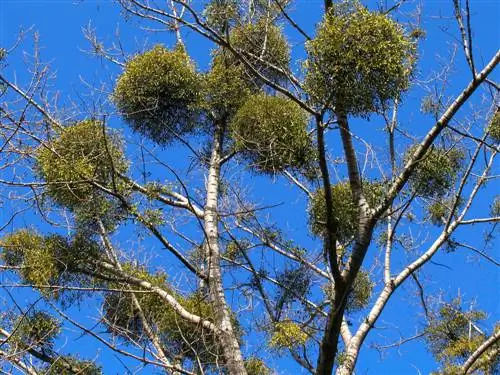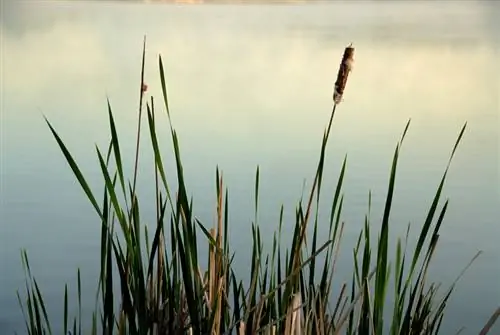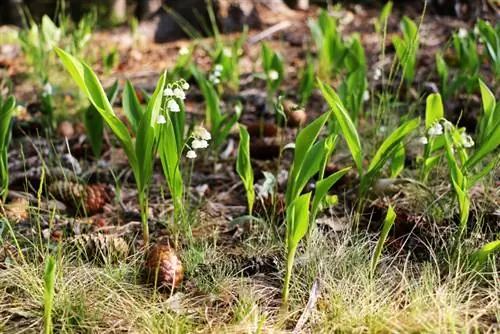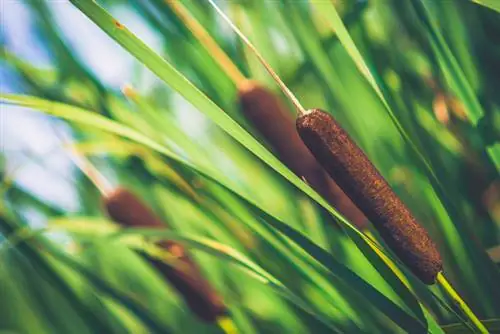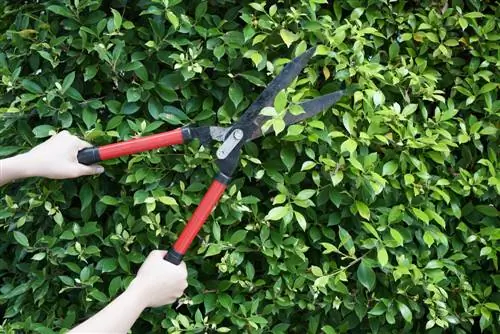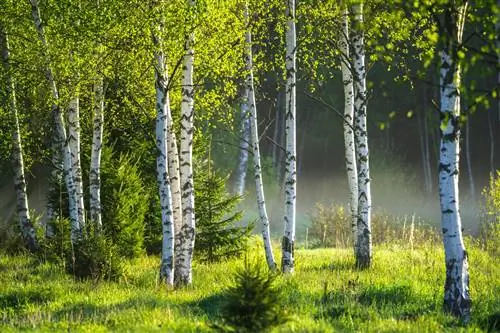- Author admin [email protected].
- Public 2023-12-16 16:46.
- Last modified 2025-01-23 11:22.
Mistletoe is a plant steeped in history. After all, she has been worshiped by people for thousands of years. For this reason, the question often arises as to whether the popular mistletoe is protected or not.
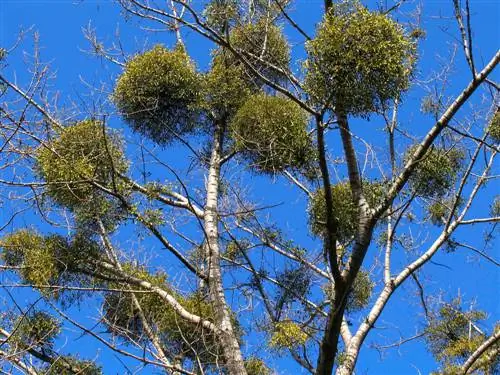
Is mistletoe protected or can it be harvested?
The mistletoe is not protected and can be harvested for private purposes according to the manual bouquet regulation. Care must be taken when harvesting to avoid damaging the host tree. Official permission is required for commercial collecting.
Is mistletoe protected or can it be harvested?
The mistletoe can be harvested without hesitation as it isnot protected under nature protection. The plant may be picked for private purposes according to the so-called “hand bouquet regulation”. This means that a small amount can be taken legally. However, this should be done carefully so that the host tree is not affected. No entire branches may be cut off for harvesting purposes. Anyone who wants to collect mistletoe for commercial purposes must first apply for an official permit.
How many species of mistletoe are there and are they protected?
Germany is home totwo different types of mistletoe. However,none of them is protected under nature protection These are primarily found on fruit trees and especially apple trees. The most common variety is known as white-berry mistletoe and, in addition to fruit trees, also inhabits deciduous trees. The preferred places are the trunks and branches. Oak mistletoe, however, is rarely found. In contrast to white-berry mistletoe, which is known as wintergreen, oak mistletoe is considered summer-green and therefore prefers warm temperatures and dry air.
How can unprotected mistletoe be harvested correctly?
Mistletoe is best harvested in the winter months of November and December. In spring this should happen in March or April. Although the plant is not protected, it should still be carefully separated from its host tree. The mistletoe can be removed using ahand saworsharp scissors. Simply tearing it down should be avoided at all costs as this can permanently damage the tree. After the first hoarfrost, isolated mistletoe branches usually fall off on their own.
Tip
The overgrown orchard as an oasis for the unprotected mistletoe
If you are looking for a larger amount of mistletoe, you should look out for overgrown orchards. Since this plant is not subject to nature conservation, you can harvest it for your own use. These meadows mostly contain old fruit trees, which turn out to be a true oasis for mistletoe. Apple trees are considered particularly popular host trees for mistletoe.

